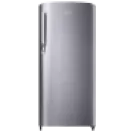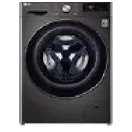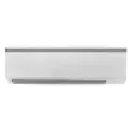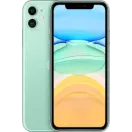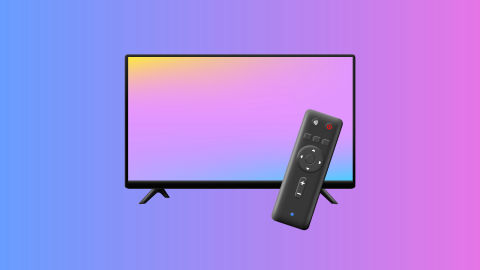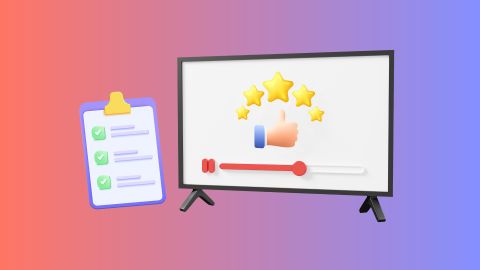Check out for premium audio systems featuring Dolby Digital and DTS technology on Bajaj Mall. Alternatively, visit the nearest Bajaj Finserv partner store and explore the wide range of options available. Select the TV that suits your preferences and convert its cost into Easy EMIs. You can choose to repay it in a convenient tenure of up to 60 months. This financing solution from Bajaj Finserv is available on 1 million products.
3 min
25-Dec-2024
Dolby Digital and DTS are two leading audio technologies designed to deliver cinematic sound. While Dolby Digital offers crisp clarity, DTS provides richer audio detail. Choosing between them depends on your device compatibility and your preference for sound quality.
Check out for premium audio systems featuring Dolby Digital and DTS technology on Bajaj Mall. Alternatively, visit the nearest Bajaj Finserv partner store and explore the wide range of options available. Select the TV that suits your preferences and convert its cost into Easy EMIs. You can choose to repay it in a convenient tenure of up to 60 months. This financing solution from Bajaj Finserv is available on 1 million products.
Check out for premium audio systems featuring Dolby Digital and DTS technology on Bajaj Mall. Alternatively, visit the nearest Bajaj Finserv partner store and explore the wide range of options available. Select the TV that suits your preferences and convert its cost into Easy EMIs. You can choose to repay it in a convenient tenure of up to 60 months. This financing solution from Bajaj Finserv is available on 1 million products.
Overview
Dolby Digital and DTS are two leading audio technologies that deliver high-quality sound for movies, music, and gaming. Dolby Digital uses compression techniques to produce clear, multi-channel audio, making it widely compatible with home theatres and TV setups. On the other hand, DTS focuses on preserving more audio data, resulting in richer and more dynamic soundscapes.
Both formats support surround sound experiences, with Dolby Digital often preferred for streaming platforms and DTS excelling in Blu ray and physical media. When choosing a TV, such as the Samsung 32-inch TV, understanding these formats ensures you make the most of your audio setup.
DTS, on the other hand, uses a higher bitrate, allowing for more audio data to be retained. This results in richer, more detailed sound, especially when used with physical media like Blu ray discs. For large home theatre setups with multiple speakers, DTS provides a more immersive experience with precise sound placement and clearer dynamic range.
However, sound quality also depends on your audio equipment. If you have a premium soundbar or a surround sound system, DTS might give you the edge in audio fidelity. For casual users relying on built-in TV speakers or basic sound systems, Dolby Digital remains a reliable and efficient choice.
For a balanced experience, consider investing in TVs with advanced audio capabilities, such as the Sony TV range, which supports both formats and ensures you get the best of both worlds.
Visit the nearest Bajaj Finserv partner store and explore the wide range of options available. Select the TV that suits your preferences and convert its cost into Easy EMIs. You can choose to repay it in a convenient tenure of up to 60 months. This financing solution from Bajaj Finserv is available on 1 million products.
Both formats support surround sound experiences, with Dolby Digital often preferred for streaming platforms and DTS excelling in Blu ray and physical media. When choosing a TV, such as the Samsung 32-inch TV, understanding these formats ensures you make the most of your audio setup.
Key technical differences
- Audio compression: Dolby Digital uses higher compression to reduce file size, ensuring smooth playback on various devices. DTS uses lower compression, resulting in higher bitrates and richer sound quality.
- Channel support: Both support 5.1 and 7.1 surround sound systems, but DTS tends to offer more refined audio details on compatible setups.
- Compatibility: Dolby Digital is more widely supported across streaming platforms, while DTS excels in physical media like Blu ray discs.
- Bitrate: DTS has a higher bitrate (up to 1.5 Mbps) compared to Dolby Digital (up to 640 Kbps), which translates to better sound clarity.
- Use case: Dolby Digital is more suited for streaming and casual TV watching, while DTS shines in dedicated home theatre setups.
Pros and cons of each format
Dolby Digital:- Pros: Widely supported across devices and streaming platforms, efficient compression for smaller file sizes, consistent performance.
- Cons: Slightly lower bitrate than DTS, which may result in some loss of audio quality.
- Pros: Higher bitrate delivers richer sound quality, ideal for physical media like Blu rays, immersive surround sound.
- Cons: Less supported on streaming platforms, requires compatible hardware for optimal performance.
Choosing based on your audio setup
- For home theatres: DTS is ideal for setups with multiple speakers and an AV receiver, as it can fully utilise its high bitrate capabilities.
- For streaming platforms: Dolby Digital is more widely supported by streaming services like Netflix, Prime Video, and Disney+.
- For smaller rooms: Dolby Digital performs well even with basic soundbars or smaller surround systems.
- For physical media enthusiasts: DTS is the preferred choice for Blu ray discs and lossless audio formats.
- For compatibility: If your TV or sound system is older, Dolby Digital might offer better compatibility.
Which format offers better sound quality?
When it comes to sound quality, both Dolby Digital and DTS deliver exceptional audio, but they excel in different scenarios. Dolby Digital is known for its efficient compression and consistent performance across devices, making it ideal for streaming content on platforms like Netflix or Amazon Prime. It balances audio clarity and file size effectively, ensuring smooth playback even on limited hardware.DTS, on the other hand, uses a higher bitrate, allowing for more audio data to be retained. This results in richer, more detailed sound, especially when used with physical media like Blu ray discs. For large home theatre setups with multiple speakers, DTS provides a more immersive experience with precise sound placement and clearer dynamic range.
However, sound quality also depends on your audio equipment. If you have a premium soundbar or a surround sound system, DTS might give you the edge in audio fidelity. For casual users relying on built-in TV speakers or basic sound systems, Dolby Digital remains a reliable and efficient choice.
For a balanced experience, consider investing in TVs with advanced audio capabilities, such as the Sony TV range, which supports both formats and ensures you get the best of both worlds.
Visit the nearest Bajaj Finserv partner store and explore the wide range of options available. Select the TV that suits your preferences and convert its cost into Easy EMIs. You can choose to repay it in a convenient tenure of up to 60 months. This financing solution from Bajaj Finserv is available on 1 million products.
Explore TVs on EMI with Bajaj Finserv
For those seeking an audio setup that offers the best sound quality, Bajaj Mall provides a wide variety of Dolby Digital and DTS enabled devices. Compare models, understand their audio capabilities, and then head to your nearest Bajaj Finserv partner store to make your selection. With Bajaj Finserv’s financing solutions, you can buy your desired product without worrying about budget constraints. Choose an appropriate repayment period and split your payments into affordable Easy EMIs. Bajaj Finserv also supports financing on premium audio systems.Benefits of shopping with Bajaj Finserv
- Affordable pricing: Get cost-effective pricing on premium Dolby Digital and DTS audio devices at partner stores.
- Easy EMIs: Enjoy the flexibility of paying in Easy EMIs, making your purchase stress free.
- Zero down payment: Certain audio products are available with zero down payment, removing any upfront expense.
- Wide range and accessibility: Explore an extensive range of audio systems across partner outlets.
- Special deals and cashback: Unlock exclusive cashback offers and special deals.
- Complimentary home delivery: Selected audio systems come with free home delivery for a hassle-free experience.
Televisions
TVs by size
TVs by budget
TV comparisons
Bajaj Finserv App for all your financial needs and goals
Trusted by 50 million+ customers in India, Bajaj Finserv App is a one-stop solution for all your financial needs and goals.
You can use the Bajaj Finserv App to:
Apply for loans online, such as Instant Personal Loan, Home Loan, Business Loan, Gold Loan, and more.
You can use the Bajaj Finserv App to:
Apply for loans online, such as Instant Personal Loan, Home Loan, Business Loan, Gold Loan, and more.
- Explore and apply for co-branded credit cards online.
- Invest in fixed deposits and mutual funds on the app.
- Choose from multiple insurance for your health, motor and even pocket insurance, from various insurance providers.
- Pay and manage your bills and recharges using the BBPS platform. Use Bajaj Pay and Bajaj Wallet for quick and simple money transfers and transactions.
- Apply for Insta EMI Card and get a pre-approved limit on the app. Explore over 1 million products on the app that can be purchased from a partner store on Easy EMIs.
- Shop from over 100+ brand partners that offer a diverse range of products and services.
- Use specialised tools like EMI calculators, SIP Calculators
- Check your credit score, download loan statements, and even get quick customer support—all on the app.
Frequently asked questions
What is Dolby Digital?
Dolby Digital is an audio compression technology designed to deliver multi-channel surround sound. It supports formats like 5.1 and 7.1 audio channels, offering immersive audio experiences for movies, TV shows, and streaming content. It is widely used in home theatres and streaming platforms.
Is DTS better than Dolby Digital?
DTS often offers higher bitrates than Dolby Digital, resulting in richer audio quality. However, Dolby Digital is more commonly supported across devices and streaming services. The choice between them depends on the equipment, content source, and personal preference.
Do all TVs support Dolby Digital?
Not all TVs support Dolby Digital. While most modern smart TVs come with Dolby Digital compatibility, older models or entry level TVs might lack this feature. Checking the TV's audio specifications can confirm its support for Dolby Digital technology.
Can I switch between Dolby and DTS?
Yes, many TVs and audio devices allow you to switch between Dolby Digital and DTS audio formats in the audio settings menu. However, both your TV and audio system must support these formats for seamless switching and playback.
Which one is better for movies?
For movies, both Dolby Digital and DTS deliver excellent surround sound. Dolby Digital is more widely supported on streaming platforms, while DTS offers higher audio bitrates for physical media like Blu ray discs. The choice depends on your playback device and content source.
Show More
Show Less

